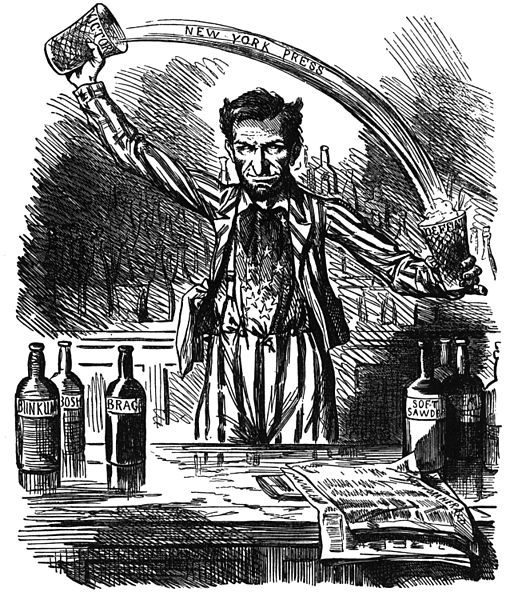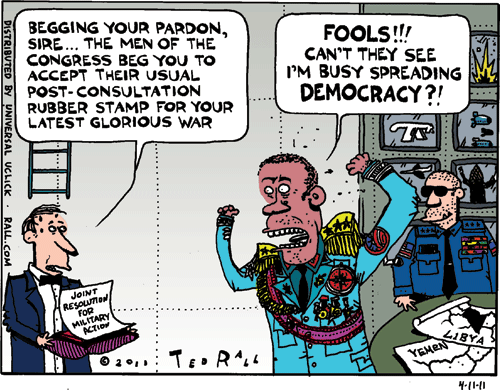Here's an article about the history of political cartooning written by Evelyn Robinson for this blog. Thanks Evelyn!
How The US Humor War Was Won: A Brief History Of Political Cartoons
It’s very rare for a country to say that they can more or less trace their entire history through a medium other than dry books or art. The US is one of the lucky places that can, though. Cartoons have a rich and important legacy in the country, meaning that history is not only brought alive, but brought alive with humor.
The reason they work so well is because they’re a way of putting a funny or comic slant on a serious issue, highlighting it and making a point, yet doing so in a way which becomes accessible for everyone. Over the years, political cartooning has changed radically. Here are just a few of the notable and honorable names that have made waves through the years:
The first political cartoon
To find the first example of a political cartoon, we need to travel back almost two hundred and sixty years to 1754. One of the Founding Father’s of the US, Benjamin Franklin’s “Join or Die” cartoon is now thought to be the first example of such humor being used in a political setting. The cartoon depicts a snake which has been severed into many pieces, with each chopped up piece representing a different part of the colonies.

image courtesy of apstudent.com
It was said that if the parts of a severed snake were left next to each other, eventually they would connect up again, and this was the idea behind it the cartoon. It represented a rallying call for unity between colonies and a chance to try and ignite revolutionary spirit amongst everybody.
Early political cartoons during times of crisis
After Franklin’s initial stab at humor, the idea of using cartoons and caricatures during things like Presidential election campaigns really took off. Initially, they started off as something that would be passed from person to person or pinned up on billboards or walls. The images they carried would gently (or not so gently) lampooning politicians and the things they said or decisions they made. Towards the end of the eighteenth century and into the nineteenth, magazines, periodicals and newspapers like Harper’s Weekly, Vanity Fair and Puck carried art work and cartoons that started to do the same.

image courtesy of thoughtsontheatre.wordpress.
com
In 1816, the Second Bank of the United States was set up. It was heavily criticised for being a monopoly. Federal funds were going into it, but it was essentially a private business. Sixteen years later, in 1832, its charter came up for renewal, but was vetoed by the then President Andrew Jackson. Several cartoons were made at the time, one of which featured President Jackson as some sort of hero, with the bank represented as a multi-tentacled Monster that he had to somehow try and vanquish.
In 1862, this cartoon of Abraham Lincoln shows that political spin is not something that came into being in the twentieth century. The artwork depicts him treating the press like various different types of liquor in bottles, to be shaken up and used at random depending on his mood!

image courtesy of wikimedia commons
Into the twentieth and twenty first century
Times change and so does humor. Moving into the twentieth century no topic seems off limits and the boundaries seem there to be taken down rather than being gently nudged.
Serious times of crisis such as the Vietnam War were taken apart by cartoonists such as David Levine created works of art that went far beyond gently taking a sideswipe at political matters. In this selection of David Levine Cartoons you can truly get an idea of how radically different his work was to that of the artists that went before him. These aren’t always safe or comfortable works to look at; they embody caricature and paint politicians and the people who run the country in less than flattering lights. They are exaggerated images that give a heightened sense of perspective to the prescient matters of the day.
Artists like Clifford H Baldowski (who went by the nickname Baldy) created images that not only became iconic, but ended up becoming a rich seam of information for anyone who wanted to understand what was happening in politics during the twentieth century. Baldy's Cartoons again, often offered a biting opinion on matters of state. This was satire laced with barbed wire. At the height of his career, he interpreted matters like President Nixon and the Watergate Scandal, whilst also casting his eye over more local and parochial matters too.
Into the twenty first century, it seems like nothing is off limits as far as cartoon humor goes whether its the home mortgage market collapse or George W's IQ or percieved lack thereof. Cartoonists like Stuart Carlson and Ted Rall offer interesting sideswipes at the current race for the White House, with scathing images of Mitt Romney and Barack Obama online in publications like Slate Magazine. It seems the more cutting, the better and now, with the rise of the internet, nothing is off limits.

Ted Rall Cartoon. Image courtesy of original.antiwar.com
Our thirst for humor that is acidic and that takes no prisoners is best encapsulated through the often cruel, but bitingly truthful world of cartooning. From the Founding Fathers to the Filthy Newcomers, it’s all there.

.jpg)